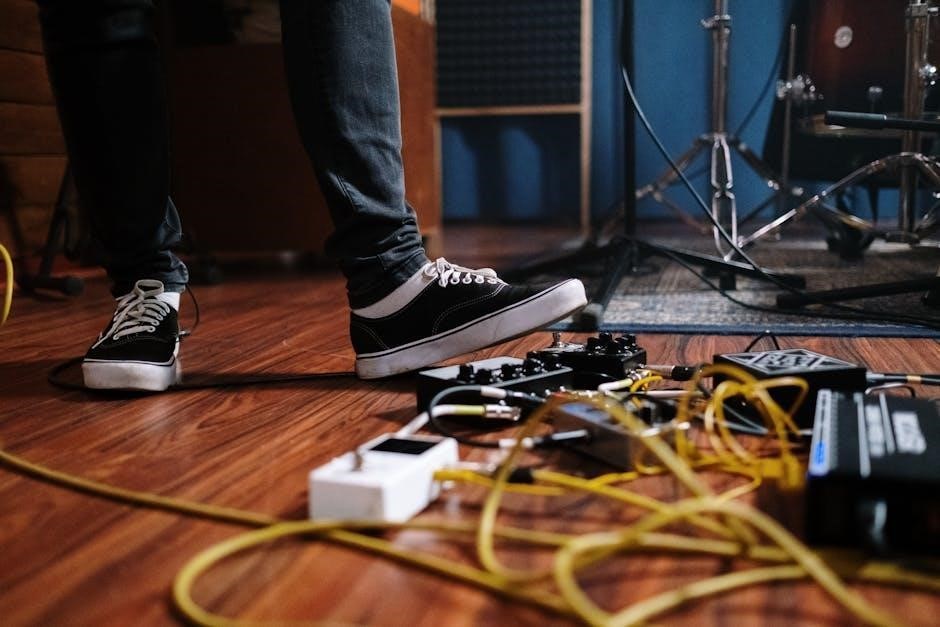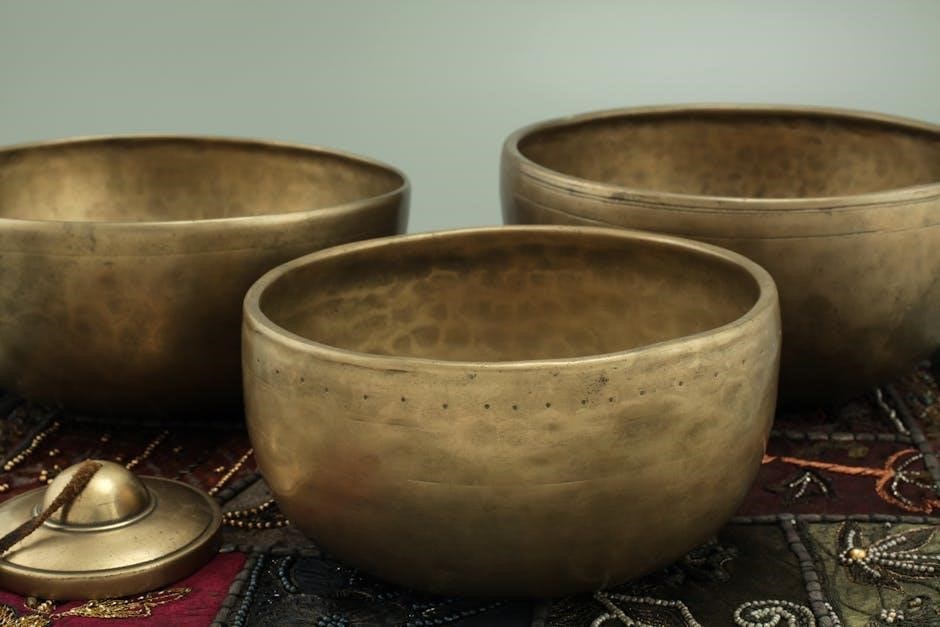Orthopedic instruments are specialized tools used in diagnosing, treating, and rehabilitating musculoskeletal conditions․ They are essential for surgeries, fracture reductions, and post-operative care, with detailed guides and PDF catalogs available for reference․
1․1 Definition and Overview
Orthopedic instruments are specialized medical tools designed for diagnosing, treating, and rehabilitating musculoskeletal conditions․ They include devices like osteotomes, bone drills, and fracture clamps, essential for surgeries and post-operative care․ Detailed PDF catalogs provide comprehensive lists, names, and images, aiding professionals and patients in understanding their uses and applications in modern orthopedic practices․
1․2 Importance in Orthopedic Care
Orthopedic instruments are vital for diagnosing and treating musculoskeletal disorders, enabling precise surgical interventions and post-operative care․ They facilitate fracture reductions, joint replacements, and deformity corrections, ensuring proper alignment and stability․ Their use improves patient outcomes, reduces recovery time, and enhances the quality of life for individuals with orthopedic conditions, making them indispensable in modern healthcare․
Categories of Orthopedic Instruments
Orthopedic instruments are categorized into plaster, surgical, and diagnostic tools, each serving distinct roles in patient care and treatment processes, ensuring effective outcomes․
2․1 Plaster Instruments
Plaster instruments are essential for immobilizing fractures and supporting healing․ Key tools include plaster saws, trowels, and measuring tapes․ These devices help apply, shape, and remove casts effectively, ensuring proper immobilization and patient comfort during recovery․
2․2 Surgical Instruments
Surgical instruments in orthopedics are specialized tools used for precise bone cutting, drilling, and stabilization during operations․ Common examples include bone saws, drills, reamers, osteotomes, and chisels․ These instruments are typically made from durable materials like stainless steel or titanium, ensuring longevity and sterility․ Ergonomic designs enhance surgeon comfort and control, crucial for intricate procedures․
2․3 Diagnostic Instruments
Diagnostic instruments in orthopedics are essential for assessing bone and joint conditions․ Common tools include arthroscopes for joint visualization, goniometers for measuring joint angles, and radiometers for bone density testing․ These instruments help diagnose fractures, deformities, and degenerative conditions, guiding precise treatment plans․ They are often lightweight and designed for accuracy, ensuring reliable patient evaluations and optimal outcomes․

Bone-Cutting and Shaping Instruments
Bone-cutting and shaping instruments are used to modify bone structure during surgeries, aiding in precise adjustments for proper alignment and fit․ Examples include osteotomes and chisels․
3․1 Osteotomes
Osteotomes are specialized tools used in orthopedic surgeries to cut, shape, or remove bone segments․ They come in various types, including curved, straight, and angled designs, each suited for specific surgical needs․ These instruments are essential for precise bone adjustments, ensuring proper alignment and fit during procedures like joint replacements or fracture repairs․ Their versatility and precision make them indispensable in orthopedic operations․
3․2 Chisels
Orthopedic chisels are robust tools used to remove or shape bone tissue during surgeries․ Available in flat, angled, or curved designs, they are crafted from high-grade stainless steel for durability․ Chisels are essential for precise bone sculpting in procedures like joint replacements or reconstructive surgeries, ensuring smooth bone edges and proper fit․ Their ergonomic handles enhance control and safety during use․
3․4 Bone Drills and Reamers
Bone drills and reamers are essential orthopedic tools for creating precise holes and enlarging bone cavities․ Drills are used to initiate holes, while reamers refine and expand them․ Both instruments are available in various diameters and are commonly employed in joint replacement surgeries to ensure proper implant fit․ Their design ensures minimal bone damage and optimal surgical outcomes․

Fracture Reduction Instruments
Fracture reduction instruments are specialized tools used to realign and stabilize broken bones during orthopedic surgeries, ensuring proper healing and alignment․ They include clamps, traction devices, and plate/screw systems․
4․1 Bone Holding Clamps
Bone holding clamps are essential tools in orthopedic surgeries, used to securely grip and stabilize bone fragments during fracture reduction․ Available in various types, such as Kern clamps or Allis clamps, they provide a firm grip without causing damage․ Made from high-quality stainless steel, these clamps ensure precise alignment and immobilization, facilitating effective fracture management and proper healing outcomes in surgical procedures․
4․2 Fracture Traction Devices
Fracture traction devices are used to apply controlled force for aligning and stabilizing bone fragments during healing․ Common types include Steinmann pins and Kirschner wires, often used in skeletal traction․ These devices are crucial in orthopedic surgeries, ensuring proper bone alignment and reducing displacement․ They are frequently detailed in orthopedic instrument catalogs, highlighting their role in preoperative and intraoperative care․
4․3 Plate and Screw Fixation Tools
Plate and screw fixation tools are essential for stabilizing fractures and promoting healing․ These devices include compression plates, locking plates, and cortical screws, designed to provide rigid fixation․ They are commonly used in femoral, tibial, and humeral fractures․ Detailed in orthopedic instrument catalogs and PDF guides, these tools enable precise alignment and stability, facilitating optimal recovery and bone union․

Ergonomics and Safety in Orthopedic Instruments
Ergonomic design reduces surgeon fatigue, while safety features prevent patient injury․ Modern instruments prioritize comfort, precision, and durability, ensuring safe and effective orthopedic procedures․
5․1 Importance of Ergonomic Design
Ergonomic design in orthopedic instruments minimizes surgeon fatigue and enhances precision․ It ensures better control during procedures, improving patient safety and reducing the risk of surgical errors․ Properly designed tools also lower the risk of repetitive strain injuries for medical professionals, making them essential for long-term surgical efficiency and accuracy in orthopedic care․
5․2 Safety Features in Modern Instruments
Modern orthopedic instruments incorporate advanced safety features to ensure patient and user protection․ These include anti-slip handles, secure locking mechanisms, and biocompatible materials to minimize allergic reactions․ Many tools also feature sterile packaging and easy-to-clean designs to prevent infections․ Such innovations enhance safety, reducing risks during surgical procedures and improving overall outcomes in orthopedic care․

Classification and Naming of Orthopedic Instruments
Orthopedic instruments are classified by function, design, and surgical application․ Names often reflect their purpose, such as “bone clamp” or “osteotome,” ensuring clarity and precision in identification․
6․1 Naming Conventions
Orthopedic instruments are named based on their function, shape, or the anatomical region they target․ Names often combine descriptive terms, such as “knee” or “bone,” with action words like “clamp” or “saw․” Standardized naming ensures consistency, aiding surgeons and medical teams in quick identification and precise communication during procedures․
6․2 Cataloging Systems
Orthopedic instruments are cataloged using standardized systems to organize and retrieve them efficiently․ These systems often involve alphanumeric codes or hierarchical categorizations based on instrument type, function, or anatomical application․ Suppliers and manufacturers use these systems to create comprehensive catalogs, ensuring easy identification and access for medical professionals․ This method enhances operational efficiency in clinical and surgical settings․

Top Orthopedic Instruments with Names and Uses
Essential orthopedic tools include osteotomes, chisels, bone drills, and fracture clamps, each serving specific functions in surgeries and treatments․ Their names often reflect their purposes․
7․1 List of Essential Instruments
Key orthopedic tools include osteotomes for cutting bone, chisels for shaping, bone drills for precision holes, fracture clamps for alignment, and screwdrivers for implant fixation․ These instruments are vital for surgeries and treatments, ensuring proper bone alignment and stabilization․
7․2 Detailed Descriptions and Applications
Orthopedic instruments like osteotomes are used for cutting and shaping bones during surgeries․ Bone drills create precise holes for screw placement, while reamers smooth bone surfaces․ Fracture clamps stabilize bone fragments, and screwdrivers secure implants․ These tools are essential for procedures like joint replacements, fracture repairs, and spinal surgeries, ensuring accuracy and patient recovery․

Orthopedic Instrument Catalogs and PDF Guides
Orthopedic instrument catalogs and PDF guides provide detailed information on names, uses, and specifications of surgical tools, aiding suppliers and healthcare professionals in selecting appropriate instruments for various procedures․
8․1 Comprehensive Catalogs
Comprehensive orthopedic instrument catalogs offer detailed listings of tools, including names, descriptions, and specifications; They feature high-quality images and technical details, serving as essential resources for surgeons, medical students, and suppliers․ These catalogs categorize instruments by type and application, aiding in easy navigation․ They also provide insights into new technologies and industry standards, helping professionals make informed decisions and stay updated on advancements in orthopedic care․
8․2 Downloadable PDF Resources
Downloadable PDF guides provide accessible and portable references for orthopedic instruments․ These resources, often available on manufacturer websites, include detailed lists, images, and descriptions; PDFs allow easy access to information, enabling professionals to identify and understand tools quickly․ They serve as valuable learning aids for surgeons and students, ensuring accurate instrument selection and proper usage in clinical settings․

Educational Resources for Orthopedic Instruments
Educational resources, including training videos and surgical guides, provide comprehensive insights into orthopedic instruments․ These tools enhance understanding and practical knowledge of instrument functions and applications․
9․1 Training Videos and Tutorials
Training videos and tutorials provide detailed insights into orthopedic instruments, including their names, functions, and surgical applications․ These resources offer step-by-step demonstrations, enhancing understanding and practical skills․ They often include real-life surgical scenarios, making them invaluable for healthcare professionals to master instrument usage and improve patient care effectively․
9․2 Surgical Instrument Identification Guides
Surgical instrument identification guides provide detailed information on orthopedic tools, including their names and uses․ These guides often feature high-quality images and descriptions to help users accurately identify and understand each instrument․ They are essential resources for surgeons, residents, and medical students, serving as valuable references for both learning and practical applications in orthopedic surgery․
Industry News and Updates
Stay updated on the latest advancements in orthopedic instruments, including new product releases, technological innovations, and industry trends shaping modern surgical practices and patient care․
10․1 Innovations in Orthopedic Instruments
Recent advancements in orthopedic instruments include robotic-assisted surgical tools, 3D-printed custom implants, and smart instruments with sensor technology․ These innovations enhance precision, reduce recovery times, and improve patient outcomes․ Additionally, eco-friendly materials and modular designs are gaining traction, offering sustainable and adaptable solutions for modern orthopedic practices, as detailed in updated orthopedic instruments with names PDF guides․
10․2 Newsroom Updates
The latest newsroom updates highlight advancements in orthopedic instruments, featuring new product launches and regulatory approvals․ Companies like Stryker and Smith & Nephew are leading innovations, with a focus on minimally invasive tools․ Stay informed through downloadable orthopedic instruments with names PDF resources, offering insights into cutting-edge technologies and industry trends shaping modern orthopedic care․
Clinical Information and Applications
Clinical applications of orthopedic instruments include fracture repairs, joint replacements, and bone realignments․ Detailed guides, such as orthopedic instruments with names PDF, provide insights into surgical procedures and post-operative care․
11․1 Surgical Procedures
Orthopedic surgical procedures often involve precise use of instruments like osteotomes, chisels, and bone drills․ Orthopedic instruments with names PDF guides provide detailed insights into tools used in joint replacements, fracture reductions, and osteotomies․ These resources help surgeons identify instruments, ensuring proper execution of techniques․ They also aid in preoperative planning and intraoperative efficiency, making them invaluable for both experienced surgeons and trainees․
11․2 Rehabilitation and Recovery Tools
Rehabilitation and recovery tools, such as crutches, walkers, and orthopedic braces, play a vital role in post-surgical care․ Orthopedic instruments with names PDF guides often include sections on these tools, detailing their uses and benefits․ They help patients regain mobility and strength, ensuring a smoother recovery process․ These resources are essential for both patients and healthcare providers to understand proper rehabilitation techniques․
The Future of Orthopedic Instruments
The future of orthopedic instruments involves advancements in AI, robotics, and biocompatible materials, ensuring enhanced precision and patient care in surgical and rehabilitation practices․
12․1 Technological Advancements
Technological advancements in orthopedic instruments are revolutionizing healthcare, with innovations like AI-driven surgical tools, robotic-assisted systems, and 3D-printed implants․ These technologies enhance precision, reduce recovery times, and improve patient outcomes․ Advanced materials and miniaturized devices are also being developed, ensuring better compatibility and less invasive procedures․ Such innovations are reshaping the future of orthopedic care, making treatments more effective and accessible․
12․2 Emerging Trends
Emerging trends in orthopedic instruments include the integration of artificial intelligence, 3D printing, and biodegradable materials․ Personalized orthopedic devices are gaining traction, offering tailored solutions for patients․ Additionally, there is a growing focus on minimally invasive tools and wearable technology to enhance recovery and rehabilitation․ These trends aim to improve patient outcomes and streamline surgical processes, marking a significant shift in orthopedic care․

Maintenance and Care of Orthopedic Instruments
Proper maintenance of orthopedic instruments ensures longevity and functionality․
Regular cleaning, sterilization, and storage are essential․
USE ultrasonic cleaners and follow manufacturer guidelines․
Lubricate movable parts and inspect for wear․
13․1 Cleaning and Sterilization
Cleaning and sterilization are critical for orthopedic instruments to prevent contamination and ensure patient safety․
Use ultrasonic cleaners or enzymatic solutions to remove debris․
Autoclaving is the standard sterilization method․
Dry instruments thoroughly to prevent rust․
Always follow manufacturer guidelines for specific materials and equipment․
13․2 Storage and Handling
Proper storage and handling of orthopedic instruments are essential to maintain their functionality․
Use protective cases or pouches to prevent damage․
Store in a cool, dry place to avoid rust or corrosion․
Avoid rough handling to prevent breakage․
Organize instruments in labeled compartments for easy access․
Regularly inspect for wear and tear to ensure readiness for procedures․

Selecting the Right Orthopedic Instruments
Discussing factors such as surgical type, material quality, ergonomic design, and system compatibility ensures effective and safe instrument selection for orthopedic procedures․
14․1 Factors to Consider
When selecting orthopedic instruments, consider material quality, ergonomic design, and compatibility with surgical systems․ Procedure-specific requirements, budget constraints, and manufacturer reputation are also critical․ Ensuring instruments meet sterility standards and regulatory compliance is essential for patient safety and effective outcomes․
14․2 Supplier and Manufacturer Guide
Research reputable suppliers and manufacturers ensuring they provide FDA-compliant, high-quality orthopedic instruments․ Look for certifications like ISO 13485 and CE Mark․ Assess their product range, customer support, and warranty options․ Request detailed catalogs or PDF guides to review specifications․ Consider reviews and testimonials from healthcare professionals to make informed decisions․
Patient Education and Instrument Awareness
Patient education materials, including PDF guides, help inform individuals about orthopedic instruments used in their care․ These resources enhance understanding, improve compliance, and support recovery․
15․1 Pre-Surgery Preparation
Pre-surgery preparation involves educating patients about orthopedic instruments used in their procedures․ PDF guides detail instrument names, purposes, and roles in surgeries, reducing anxiety and fostering trust․ Patients learn about recovery tools and post-operative care, ensuring informed decisions and smoother outcomes․
15․2 Post-Surgery Recovery Tools
Post-surgery recovery tools, such as crutches, braces, and splints, aid in mobility and healing․ Walkers and CPM machines also support rehabilitation․ PDF guides detail these instruments, ensuring patients and caregivers understand their proper use and benefits during recovery․
Orthopedic instruments play a vital role in modern medicine, offering precise solutions for surgeries, recovery, and rehabilitation․ From diagnostic tools to advanced surgical devices, understanding their functions and proper use is essential․ With continuous innovations, these instruments remain critical in improving patient outcomes․ Referencing detailed PDF guides ensures healthcare professionals and patients are well-informed and equipped for optimal care․

Leave a Reply
You must be logged in to post a comment.